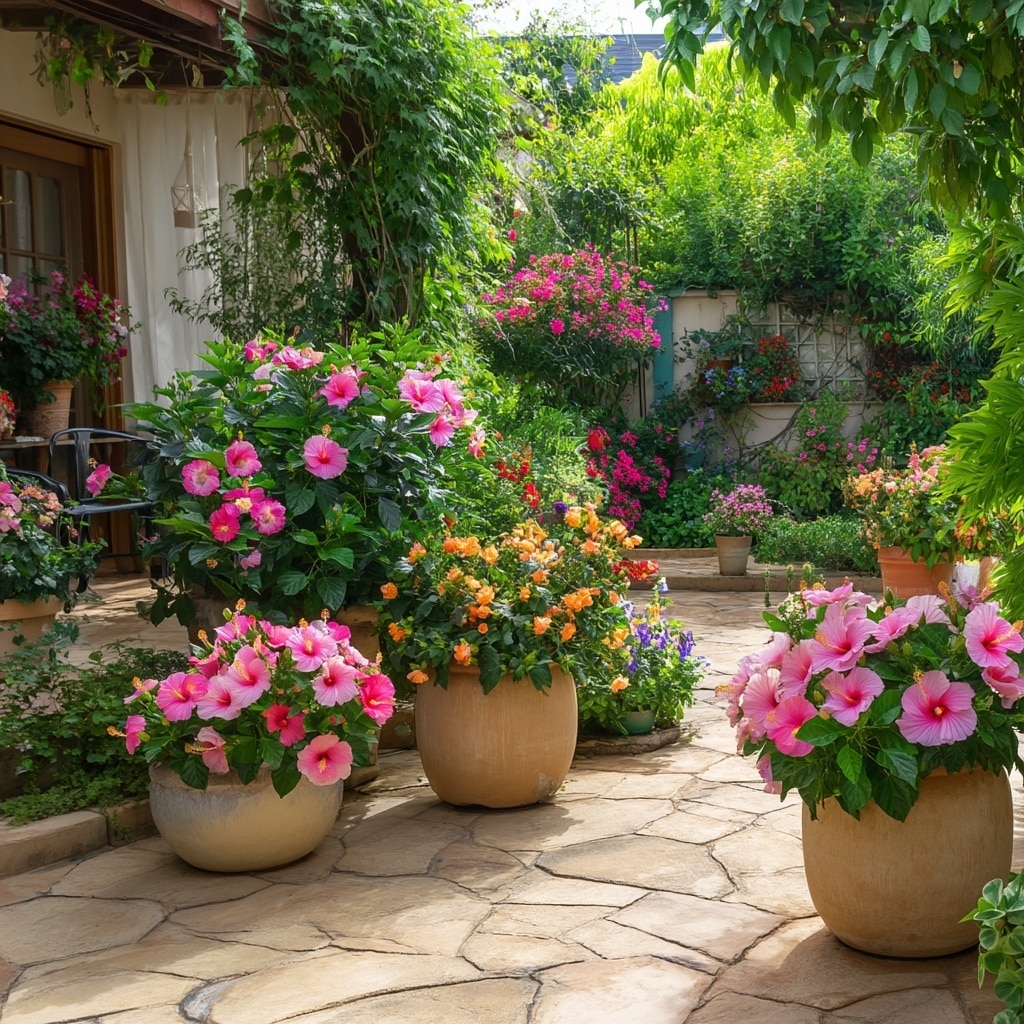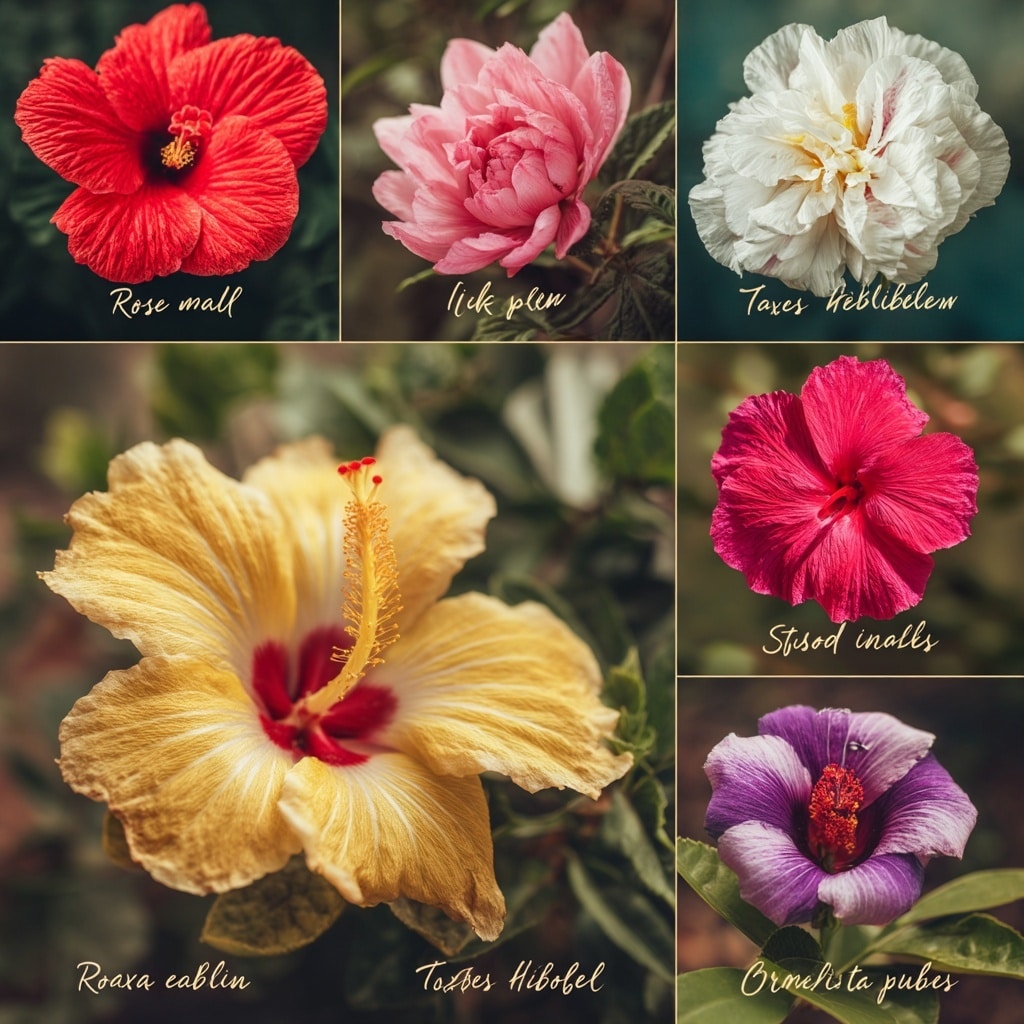Hibiscus is one of the most eye-catching and versatile plants you can grow, known for its bold, colorful blooms and ability to thrive in a wide range of environments. Whether you’re working with a tropical patio, a cold-hardy garden bed, or even a sunny indoor space, there’s a type of hibiscus that will fit perfectly into your landscape.
This flowering plant belongs to the mallow family and includes both herbaceous perennials and woody shrubs. Some varieties burst with dinner-plate-sized blooms in summer, while others produce year-round color in warm climates. Understanding the differences between hardy and tropical hibiscus—and everything in between—will help you choose the right one for your climate and gardening style.
Table of Contents
Hardy vs. Tropical Hibiscus
When choosing the right hibiscus for your garden, one of the first things to consider is your climate. Most varieties fall into two main categories: hardy hibiscus and tropical hibiscus, and each offers something unique.
Hardy Hibiscus
Hardy hibiscus varieties are tough perennials that can survive cold winters, even in USDA Zones 4 to 9. In colder regions, they die back to the ground during winter but come roaring back each summer with massive, plate-sized blooms. These plants thrive in garden beds and borders, often blooming from mid-to-late summer into early fall.
Popular types include:
- Hibiscus moscheutos (Rose Mallow)
- Hibiscus coccineus (Texas Star Hibiscus)
- Hibiscus lasiocarpos (Woolly Rose Mallow)
They love full sun, moist soil, and plenty of space to spread their large leaves and flowers.
Tropical Hibiscus
Tropical hibiscus, like Hibiscus rosa-sinensis, are evergreen shrubs that bloom almost year-round in warm climates. These types thrive in USDA Zones 10 to 12, making them perfect for patios, balconies, or indoor containers in cooler areas.
Tropical varieties are more delicate—they can’t survive frost and must be overwintered indoors in colder regions. With consistent warmth, sunlight, and humidity, they reward you with continuous flowers in shades of red, orange, yellow, and pink.
Perennial vs. Annual Hibiscus

Understanding whether your hibiscus is perennial or annual depends mostly on your local climate. While many varieties are naturally perennial, cold temperatures can turn a long-lived plant into a one-season beauty if it’s not suited for your zone.
Perennial Hibiscus
Hardy hibiscus plants are true perennials. They survive winter temperatures as low as -30°F (-34°C) and return each year with even more vigor. Ideal for USDA Zones 4–9, these varieties are planted once and enjoyed for years, provided they’re cut back in fall and mulched in colder zones.
Tropical hibiscus can also behave as perennials—but only in warm regions. In USDA Zones 10–12, they continue to bloom all year, sometimes slowing down slightly in winter.
Annual Hibiscus
In colder areas, tropical hibiscus won’t survive outdoors once frost hits. Gardeners in these climates typically treat them as annuals, growing them in containers and replanting or moving them indoors each year. Without proper winter care, tropical varieties will not return the following season.
Knowing whether your hibiscus can handle your winters helps you plan ahead and avoid disappointment come spring.
Common Hibiscus Species and Their Names

With so many varieties and hybrids, it’s easy to get confused by the different names for hibiscus. Many species go by multiple common names depending on the region, appearance, or even their use in herbal remedies or ornamental gardening.
Here’s a quick reference to help you understand the most well-known types:
Popular Hibiscus Species & Common Names
- Hibiscus moscheutos – Rose Mallow, Hardy Hibiscus, Marshmallow Hibiscus
- Hibiscus coccineus – Scarlet Rose Mallow, Swamp Hibiscus, Texas Star Hibiscus
- Hibiscus syriacus – Rose of Sharon, Shrub Althea
- Hibiscus rosa-sinensis – Chinese Hibiscus, Tropical Hibiscus, Hawaiian Hibiscus
- Hibiscus schizopetalus – Coral Hibiscus, Fringed Hibiscus
- Hibiscus sabdariffa – Roselle, Jamaican Sorrel (used in teas and herbal drinks)
- Hibiscus acetosella – Cranberry Hibiscus, Red-leaf Hibiscus, False Roselle
- Hibiscus mutabilis – Confederate Rose, Cotton Rose
- Hibiscus tiliaceus – Sea Hibiscus, Beach Hibiscus, Coastal Hibiscus
Each type of hibiscus brings a different look and purpose to the garden. Some are ideal for their blooms, others for their foliage, and a few even offer culinary or medicinal value.
Care Tips and Considerations for Healthy Hibiscus

Caring for hibiscus plants isn’t difficult once you understand their specific needs. Whether you’re growing a hardy variety in the garden or a tropical type in a container, a few simple practices will keep your hibiscus healthy and blooming throughout the season.
Sunlight
All hibiscus types love sun. Aim for at least 6 hours of direct sunlight per day. In very hot climates, tropical varieties benefit from some afternoon shade to prevent leaf scorch.
Watering
Hardy hibiscus prefers consistently moist, rich soil—even tolerating wet sites like rain gardens. Tropical hibiscus likes well-drained soil and needs regular watering, especially during bloom season. Be careful not to overwater, as this can lead to root rot and yellowing leaves.
Soil & Fertilizer
Feed tropical hibiscus every 2–3 weeks during the growing season with a high-potassium fertilizer to support continuous flowering. Hardy types do well with compost-rich soil and may need only light fertilization in spring.
Pests & Problems
Common pests include aphids, whiteflies, and Japanese beetles. Keep an eye out for bud drop, which may be caused by heat stress or inconsistent watering. Yellowing leaves are often a sign of overwatering or poor drainage.
Pet Safety
Most hibiscus species are considered non-toxic to pets, including the popular Rose of Sharon. Still, it’s wise to discourage chewing, as any plant can cause mild stomach upset.
With the right care, your hibiscus will reward you with vibrant blooms and lush foliage—season after season.
Conclusion

Whether you’re looking for cold-hardy perennials or tropical stunners that bloom year-round, there’s a hibiscus variety perfect for every garden. With their bold flowers, lush foliage, and ability to thrive in containers or beds, hibiscus plants offer both beauty and flexibility.
By understanding the differences between hardy and tropical types, knowing their care requirements, and choosing the right species for your climate, you’ll set yourself up for success. A well-placed hibiscus not only transforms your outdoor space but also brings seasonal color and joy year after year.






